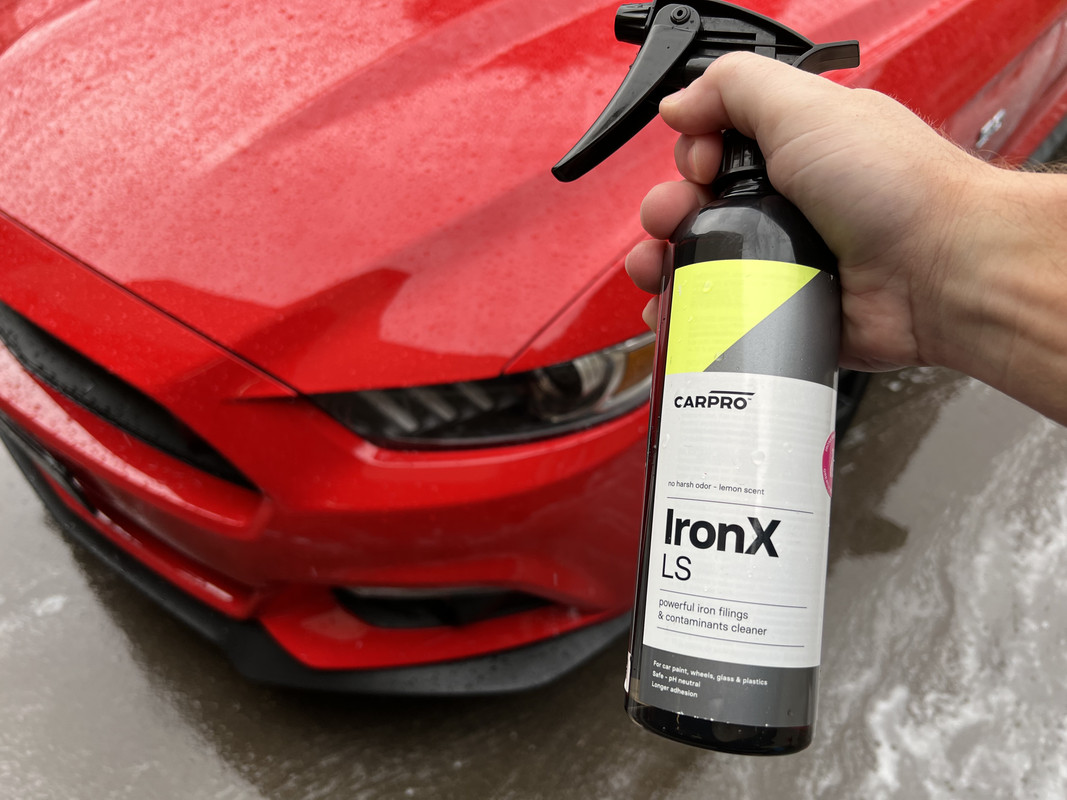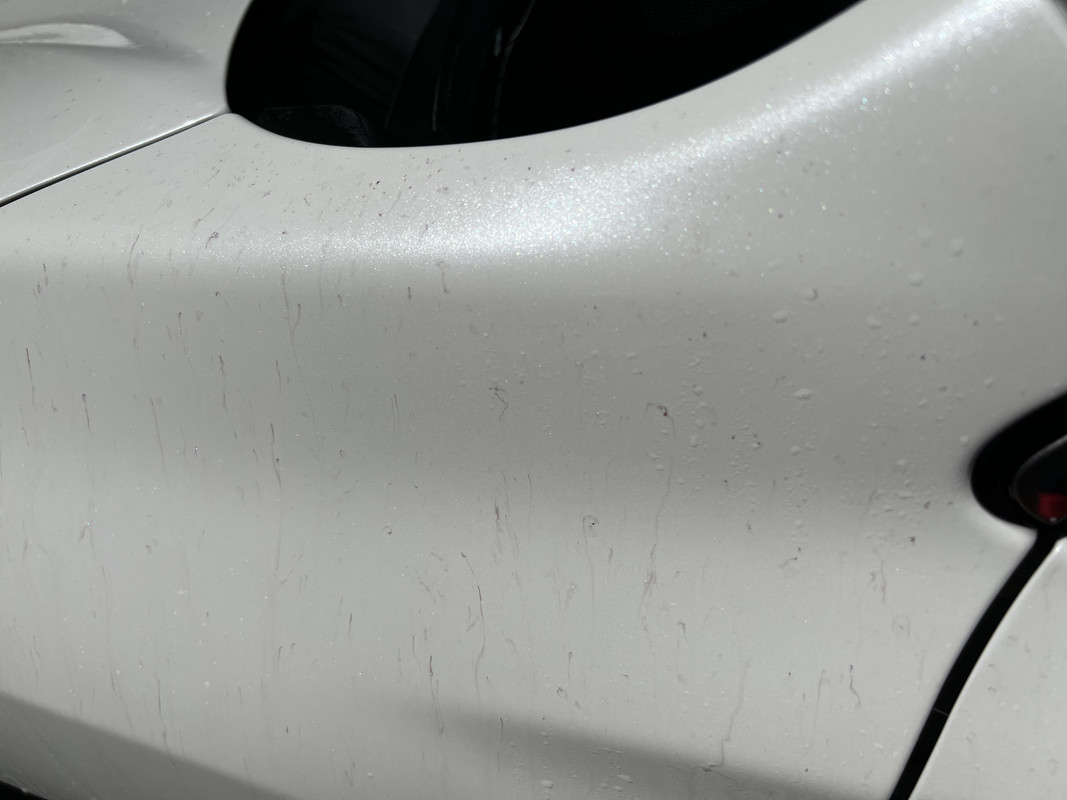I always read these threads just to see what the current thinking is and over the years I have had a few thoughts, although none of them are really original
This drawing of iron fallout particles imbedded in clearcoat was stolen off YouTube and belongs to Brian at Apex
I have seen essentially the same graphic drawn by many other detailers over the years
It would be amazing and incredibly informative if some science wizard out there could actually take a microscopic cross section picture of brake/rail dust on clearcoat and show us what is really going on, but I’m not holding my breath on that one
Anyway I guess the theory behind these pictures is that the brake dust is so hot that it literally melts itself into the clear coat, I’m not sure how it could get imbedded otherwise unless the force of washing pushed it into the paint
If you assume that the picture is more or less accurate then the idea of simply “pulling” iron particles out with clay WITHOUT hitting the fallout with an iron remover first seems less likely to be successful due to the jagged nature of the particles and even more so if the theory that it melts into the clearcoat is true
It would seem that the pro iron remover theory is that the iron remover goes down into the void and dissolves enough of the “root” of the particles so that either the particles come out with the rinsing process or are loosened enough to then be pulled out by the claying process
I respect the experiments that have been done to support both sides of the argument and I think like so many other processes we argue over that this is a one size does NOT fit all situation and each vehicle we approach needs to be evaluated and treated accordingly
I also feel that people who think that because THEIR car has ceramic discs or pads and therefore are immune to iron residue need to realize just how many different ways their ride can be exposed to iron and should at least test the more likely areas of their car for fallout
I don’t ever just assume a car is contaminated and hose it down with iron remover, I test first; it’s no different to me than a test spot when correcting paint
If I find contamination in the likely areas I’ll go further forward and test rocker panels and behind fender cutouts and see how bad it is and act accordingly and if I find iron I use a combination of spray remover and clay (not at the same time) because in all likelihood I am going to clay anyway
I’m a hobbyist so it’s not about time and working against a clock and as others have said I actually enjoy claying and get a kick out of seeing just how much garbage gets pulled out of a “clean” car's paint
As always, YMMV
Sent from my iPhone using Tapatalk










